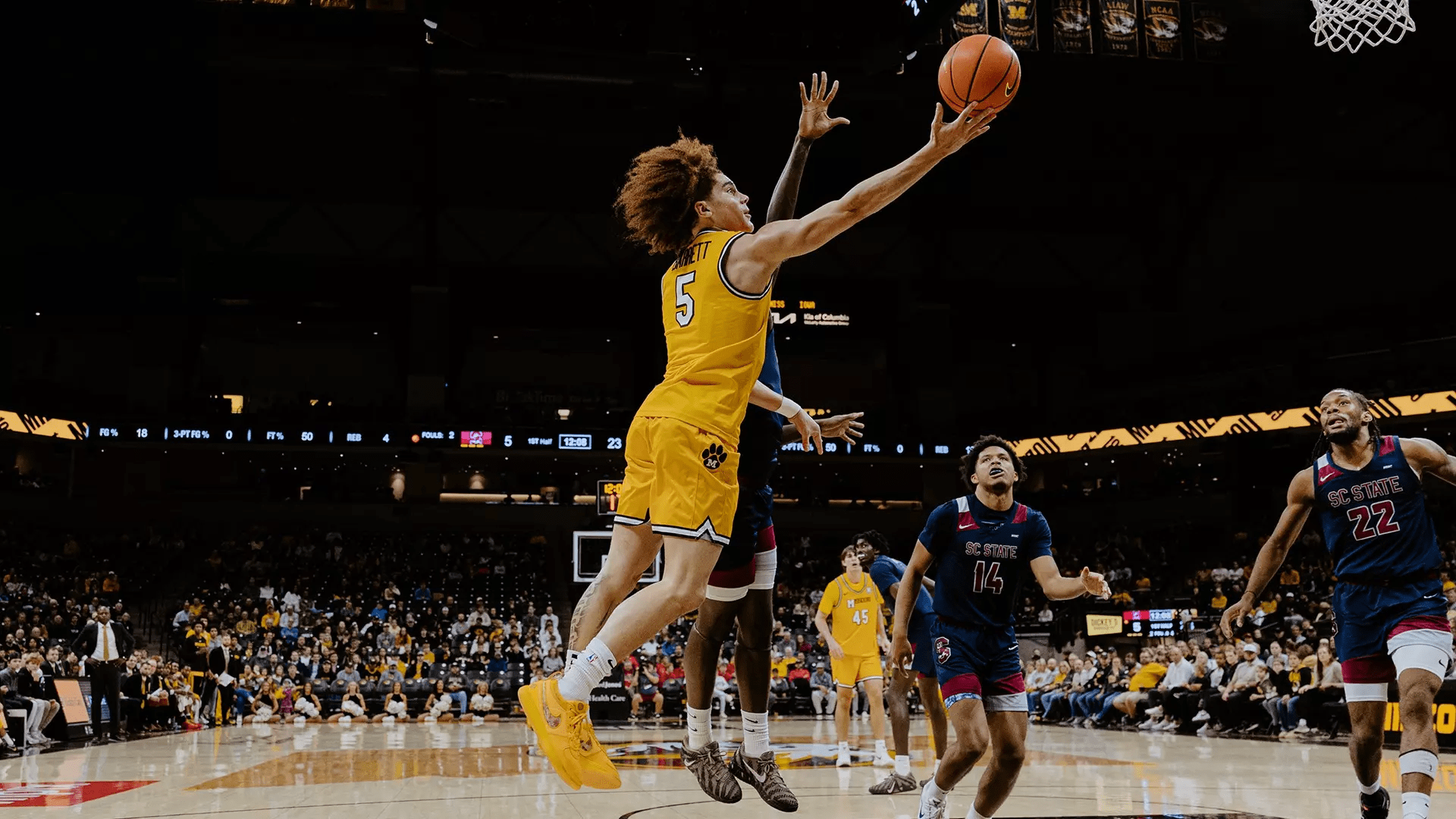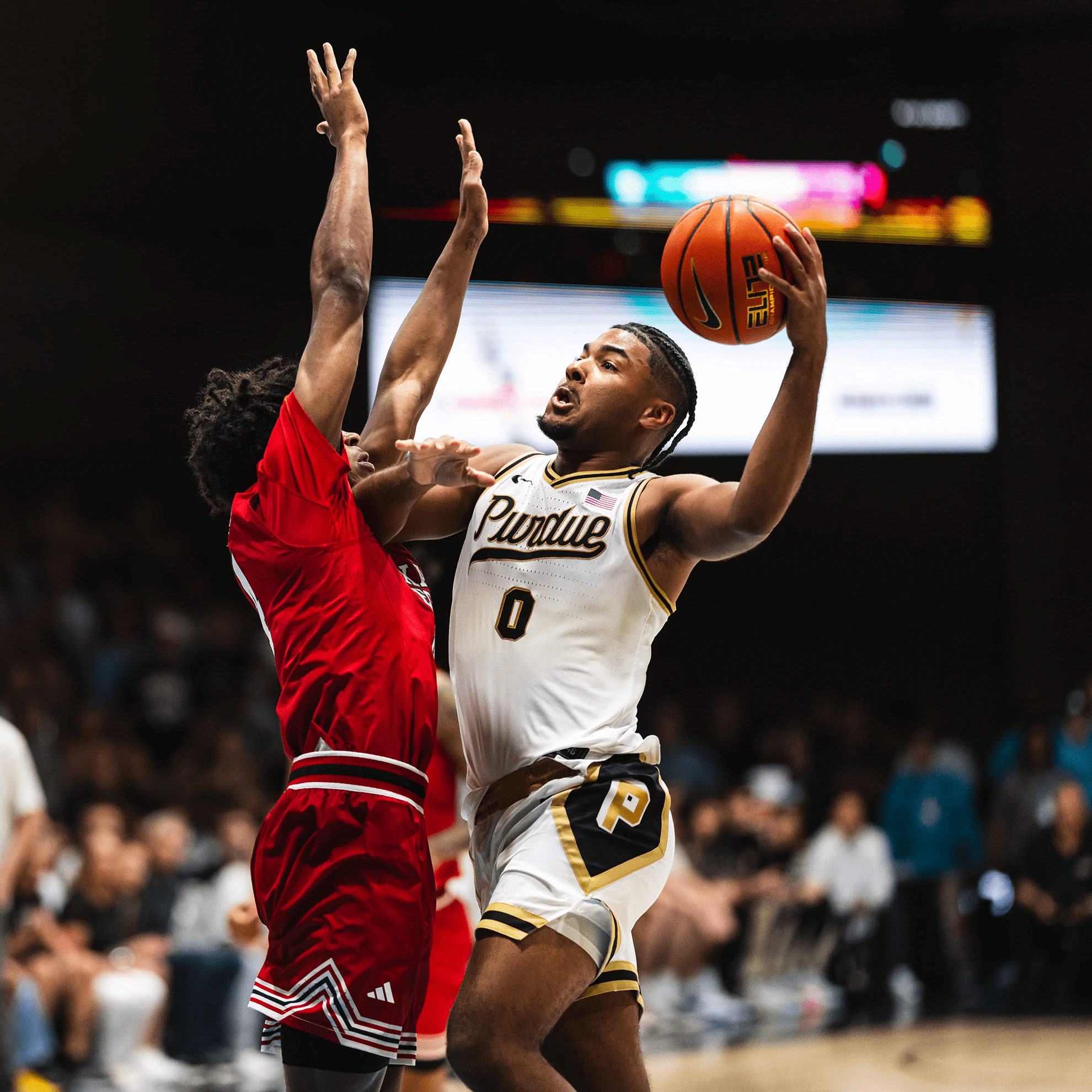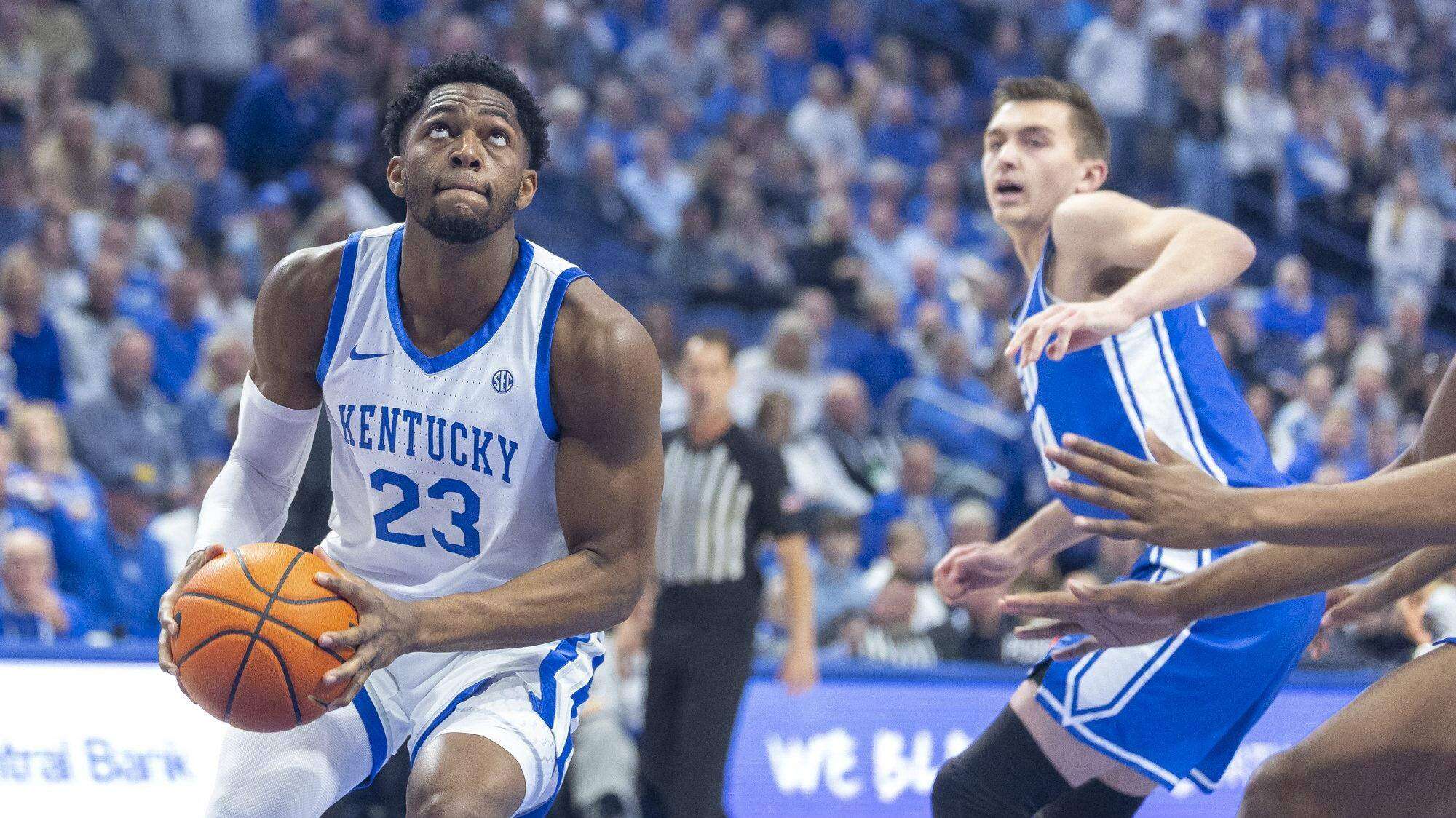Ohio State Buckeyes vs. Pittsburgh Panthers Advanced Game Analysis
Ohio State Buckeyes vs Pittsburgh Panthers Advanced Game Analysis – NCAA Men’s Basketball Nov.28, 2025 at 7:00pm ET Matchup

Ohio State Buckeyes vs Pittsburgh Panthers Advanced Game Analysis – NCAA Men’s Basketball Nov.28, 2025 at 7:00pm ET
Matchup Preview Table
| Team | Record | Points Per Game | Points Allowed | Scoring Margin | Rebounds Per Game | Assists Per Game | Turnovers Per Game |
|---|---|---|---|---|---|---|---|
| Ohio State Buckeyes | 6-0 | 92.5 | 67.3 | +25.2 | 39.0 | 18.0 | 11.7 |
| Pittsburgh Panthers | 4-3 | 72.1 | 66.6 | +5.5 | 38.0 | 13.3 | Data not fully reported |
Quick Glance Summary Card
Game Snapshot ======================================== Form: - Ohio State: 6-0, blowing teams out by more than 25 points on average - Pittsburgh: 4-3, quality wins mixed with clear offensive dips Offensive Level: Ohio State ███████████████🔥 92.5 PPG, multiple 90 plus outings Pittsburgh ████████░░░░░░░ 72.1 PPG, more methodical Defensive Scoring: Ohio State ██████████░░░░░ 67.3 PAPG, comfortable margins Pittsburgh ███████████░░░ 66.6 PAPG, keeps games in range Rebounding: Ohio State ███████████░░░ 39.0 RPG, balanced glass work Pittsburgh ██████████░░░░ 38.0 RPG, slightly behind but solid Playmaking and Control: Ohio State █████████████░ 18.0 APG, 11.7 TO, strong assist volume Pittsburgh ████████░░░░░░ 13.3 APG, more half court driven Overall Edge: Ohio State 🔥 Significant macro edge in scoring margin plus creation Pittsburgh Needs to drag game into grind mode and shorten possessions
Team Identity Profiles
Ohio State Buckeyes Team Profile
This season, Ohio State looks like a complete product on both ends of the floor. The Buckeyes are undefeated at 6-0 and are doing it with emphatic scoring and a wide scoring margin. They are averaging 92.5 points per game while allowing only 67.3, which reflects a team that not only scores in bunches but also closes possessions with defensive stops. Volume scoring has not come from a single gimmick. It is the product of diverse offensive options, clean spacing and a strong understanding of personnel.
The backcourt is driving the identity. The lead guard play has been explosive and efficient, pairing three level scoring with strong decision making. Multiple games above 90 points plus one explosion above 110 show that this is not a low variance offense that needs everything perfect to function. Instead, the Buckeyes have repeated their formula across different opponents and game scripts. Ball movement and spacing create an environment where several players can put up double figures on any given night.
On the glass, the Buckeyes sit at 39.0 rebounds per game. That is not simply a byproduct of pace. Their frontcourt and wings rebound in traffic, guards dig down to help and the team commits numbers to secure the defensive glass after initial stops. They do not need a single dominant rebounder to control the boards. The rebounding load is shared, which matters in matchups where the opponent cannot afford to sacrifice shooters just to compete on the glass.
Ohio State also shows a mature playmaking profile. Eighteen assists per game with 11.7 turnovers paints a picture of a team that shares the ball while keeping mistakes within a manageable range. The assist numbers highlight a healthy system. Buckeye possessions commonly involve multiple touches and reversals before the shot. That makes their offense harder to scheme against, because taking away one creator does not freeze the action. The ball simply flows through a second or third option.
Defensively, the Buckeyes are not simply relying on athleticism. Allowing 67.3 points per game while playing at a scoring rate over 92 points implies alignment between half court defense, transition coverage and shot selection on offense. Fewer live ball turnovers plus solid shot quality make it tough for opponents to generate easy transition points. In the half court, Ohio State contests the ball, protects the lane and recovers well enough to force opponents into tough jumpers.
Pittsburgh Panthers Team Profile
Pittsburgh enters at 4-3 with a resume that shows both potential and volatility. The Panthers average 72.1 points per game and allow 66.6, which tells a different story than Ohio State. Pitt does not rely on overwhelming scoring volume. Instead, they aim to keep games in the mid 60s to low 70s, trust their half court sets and lean on solid defense to create winning margins. Their positive scoring margin shows that when they keep the game in their preferred band, they generally execute well enough to finish at the right side of the result.
Offensively, Pitt leans on a combination of interior scoring and wing contributions, with a reliable lead option inside plus guards who can play off him. They are not structured as a pure run and gun group. Instead, their offensive feel is more deliberate. They use sets to find favorable matchups, post touches and kick out opportunities. The challenge against a team like Ohio State is that a deliberate pace can become a liability if early possessions stall and the opponent starts stringing together runs.
On the boards, Pittsburgh sits at 38.0 rebounds per game, which is strong but not overwhelming. They generally compete well on the glass and use their frontcourt size to limit opponent second chances in most matchups. That rebounding base is a key part of their defensive identity. When they control the glass, they can set their defense, avoid scramble situations and keep the possession count in their comfort zone.
Pitt averages 13.3 assists per game, a number that underscores their half court orientation. They generate good looks when the ball moves through their sets, but they do not have the same level of free flowing pass count as Ohio State. For them, offensive efficiency depends on crisply executed actions rather than constant improvisation. If their timing is on, they can carve out enough offense to stay in range. If timing is off or defensive pressure disrupts their first action, they can have dry spells that open the door to opponent runs.
Defensively, allowing 66.6 points per game across a schedule that includes both comfortable wins and some double digit losses shows that Pitt has a solid floor on that side of the ball. Their best stretches come when they force opponents into late clock decisions and channel drives toward interior help. However, against high powered offenses, they can be forced into rotation chains where closeouts become longer and breakdowns occur at the rim or from the arc.
Team Identity Snapshot Lists
Ohio State Identity Snapshot
- Explosive scoring at 92.5 points per game
- Strong scoring margin above plus 25 points
- Balanced rebounding without needing a single dominant big
- High assist volume with controlled turnover count
- Defensive scoring baseline under 70 points allowed per night
Pittsburgh Identity Snapshot
- Methodical offense built around structure rather than pace
- Solid defensive scoring baseline at 66.6 points allowed
- Competitive rebounding at 38.0 per game
- Moderate assist totals that reflect set driven offense
- Results heavily tied to maintaining lower possession games
High Level Team Comparison
At the macro level, this matchup sets up as high ceiling offensive firepower against structured, grind oriented basketball. Ohio State brings more raw scoring, more passing and a significantly larger average margin of victory. Pitt brings a more modest scoring profile but a defensive record that is good enough to hold many opponents under 70. The central question is which team can pull the game into its preferred style.
If the game is fast, with possessions piling up and the score climbing into the 80s and 90s, the numerical profile strongly favors Ohio State. The Buckeyes have already shown that they can play into triple digits while still winning comfortably. If the game is slow, with long half court possessions and fewer transition opportunities, Pitt gains leverage. Their defense is built to live in that range, and their offense can be efficient enough to punch above its raw scoring average when the pace is right.
The early edge tilts clearly toward Ohio State because their strengths travel across a wider range of game environments. They can win a race, and they can still succeed in a moderately slower game because of superior spacing and creation. Pitt has a narrower winning path that relies on keeping the math under control and preventing the game from tilting into a possession and scoring avalanche.
Core Matchup Metrics: By the Numbers
Scoring and Margin
Points Per Game Ohio State ███████████████🔥 92.5 Pittsburgh ████████░░░░░░░ 72.1 Points Allowed Per Game Ohio State ███████████░░░░ 67.3 Pittsburgh ███████████░░░░ 66.6 Scoring Margin Ohio State ██████████████🔥 +25.2 Pittsburgh ██████░░░░░░░░ +5.5
Rebounding
Rebounds Per Game Ohio State ███████████░░░ 39.0 Pittsburgh ██████████░░░░ 38.0 Glass Control Edge: Slightly Ohio State, but close enough that execution and positioning on the night can swing this category.
Playmaking and Ball Security
Assists Per Game Ohio State █████████████░ 18.0 Pittsburgh ████████░░░░░░ 13.3 Turnovers Per Game Ohio State ██████░░░░░░░░ 11.7 Pittsburgh Data incomplete, but situational play shows more pressure when chasing games. Interpretation: - Ohio State lives in a high assist environment with tolerable risk. - Pitt must keep turnovers low because they do not have the same scoring ceiling to make up for waste.
Style Matchup Summary
The numbers tell a consistent story. Ohio State scores far more, still defends at a similar scoring level and holds a much larger average margin of victory. Their assist numbers suggest they can keep offensive quality high across different guards and lineups. Pitt is a credible defensive team and does enough on the glass to avoid getting bullied, but their offense will be under real stress if they fall behind early.
For Pittsburgh, the primary goals are to control pace, limit live ball turnovers and win the shot quality battle. For Ohio State, the objectives are to run hard after misses, apply pressure to Pitt ball handlers and lean into their depth of scoring options until the defensive shell breaks. The raw statistics give Ohio State a clear projection edge. The question is whether Pitt can impose enough friction to tilt the game away from the numbers.
Advanced Metrics And Tempo Context
While full advanced efficiency splits are not publicly reported in complete form, the available scoring, rebounding and assist data still provide a strong lens on tempo and quality. Ohio State is averaging more than 92 points per game while keeping opponents just above 67. That combination implies a team that pushes tempo when opportunities are there but does not sacrifice defensive integrity to do it. Their assist numbers also confirm that those high point totals are not simply isolation waves. They are getting to those numbers through coordinated offense.
Pittsburgh, at 72.1 points scored and 66.6 allowed, plays a more controlled profile. Their scoring plus and minus numbers suggest a moderate tempo, one where half court possessions dominate and second chance points are especially important. When they win, it is often because they hold opponents under their usual output rather than because they explode offensively themselves.
Shot Quality And Creation Patterns
Shot Creation Quality (Conceptual) Ohio State ██████████████🔥 Multiple creators, strong spacing, frequent high value looks in the lane and from three. Pittsburgh ████████░░░░░░ More set dependent, can create good looks but vulnerable to disruption when first action is denied.
Ohio State leverages multiple scoring threats who can attack off the dribble, operate in ball screens and hit catch and shoot opportunities. This allows them to maintain shot quality even when a primary option is limited. Driving gravity collapses defenses and opens kick out paths, while their pace in transition produces clean early offense attempts. Pitt will need clear communication and high level discipline to avoid giving up early advantages in possessions.
Pitt can generate good shot quality when it gets into its actions cleanly. Interior touches to their forwards and centers, followed by inside out passing, can create rhythm threes or opportunities at the rim. However, they are more sensitive to disruption. Pressure on their ball handlers or an opponent that blows up the first screen can send possessions into reactive mode late in the clock. Against a defender like Ohio State that is comfortable pressuring without constantly gambling, that risk is magnified.
Rim And Perimeter Defense Dynamics
Rim Protection Feel Ohio State ███████████░░░ Rotationally solid, enough size and length to contest drives and finish possessions. Pittsburgh ██████████░░░░ Competitive rim resistance but can struggle when rotations get extended. Perimeter Containment Ohio State ██████████░░░░ Capable of chasing shooters and closing space on the arc in most matchups. Pittsburgh ███████░░░░░░░ Better when the ball is kept out of the middle, more exposed after breakdowns.
Ohio State is likely to focus on preventing straight line drives that collapse their defense and on running Pitt off comfortable catch and shoot opportunities. Their athleticism on the perimeter and willingness to contest make that a realistic plan. Pitt will try to force Ohio State into mid range jumpers and late clock decisions rather than letting them get downhill cleanly. The problem is that Ohio State has already shown the ability to finish efficiently at the rim and punish help with shooting.
Lineup Stability And Depth
Lineup Stability Index Ohio State █████████████░ Clear roles, established rotation, multiple players already in double digit scoring roles. Pittsburgh ████████░░░░░░ Ongoing balance between veterans and newer pieces, still calibrating combinations.
Ohio State benefits from a rotation where primary roles are already defined. The lead guard is a stable engine, the main scoring wings understand their usage and the frontcourt provides both finishing and rebounding. That stability reduces game to game variance and allows the coaching staff to plan matchups more aggressively.
Pittsburgh is still tuning its rotations. Several players have had standout performances, but the best five lineups across different game contexts are not entirely locked in yet. That is not unusual at this point in the season, but against a team as stable and explosive as Ohio State, any lineup experimentation carries heightened risk.
Momentum Swing Potential
Momentum Swing Index Ohio State ██████████████🔥 Capable of stringing 10-0 or 12-2 runs through combined offense and defense. Pittsburgh ██████░░░░░░░░ More methodical, less explosive, rallies are more incremental than overwhelming.
Ohio State has already shown that when they get rolling, they can bury opponents quickly. Their ability to convert defense into offense, combined with a quick strike half court attack, allows them to produce scoring waves that fundamentally change the shape of a game in a few minutes. Pitt will have to manage timeouts, substitutions and tempo carefully to prevent these bursts.
Pitt does not project as a momentum avalanche team in this matchup. Their best rally sequences are likely to come through consecutive defensive stops and efficient half court possessions, not three or four fast break buckets in a row. That is a viable path but it takes longer and requires sustained execution. Falling behind by double digits against Ohio State turns the game into a steep uphill climb for a team that is not built to race.
Pace And Efficiency Battle
The pace battle is straightforward on paper. Ohio State wants a game with more possessions, where their scoring depth and transition game have more opportunities to show up. Pitt wants a lower possession count that keeps the total volume of Ohio State shots under control and shrinks the influence of Ohio State runs. The team that gets its pace is very likely to get the result.
Ohio State does not need to play reckless to increase tempo. They can achieve a healthy pace simply by pushing after defensive rebounds, hitting ahead to wings and flowing directly from early offense into organized actions. Pitt cannot afford to turn the ball over in live ball situations or gamble on the offensive glass with poor floor balance. Every extra transition chance is essentially a gift to a Buckeye offense that is already difficult to guard in the half court.
Recent Form And Schedule Context
Ohio State comes into this game off a sequence of dominant wins that include multiple blowouts and a close test against a power conference opponent. They have already scored more than 110 points in a game and have comfortably handled mid major competition at home. That combination of game states gives them experience in both executing in tight moments and front running with professionalism.
Pittsburgh has a more mixed ledger. They have posted comfortable wins against opponents they were expected to beat and have also taken clear losses to high major competition. The loss margins, combined with their scoring averages, point to a team that can look sharp when they are the ones dictating but can struggle to keep up when forced to chase. That matters here, because Ohio State has the profile of a team that can quickly flip a two possession game into a double digit lead.
Offense Versus Defense Matchups
Ohio State Offense vs Pitt Defense
This is the central tilt in the matchup. Ohio State brings a dynamic, high scoring offense against a defense that, while respectable, has not consistently faced this level of shot making and depth. Ohio State will test Pitt in several ways. Ball screens will force decisions between switching, hedging or playing in a drop. Post touches will pull help from the weak side and open cutting lanes and spot up threes. Transition sequences will stretch the floor vertically and horizontally.
Pitt will have to decide which part of the Ohio State offense to prioritize. Take away the paint at all costs and Ohio State has enough shooting to punish short closeouts. Hug shooters and Ohio State guards can attack downhill into space. The Panthers need to change up looks, mixing in some pressure, some sagging help and varying who initiates ball pressure at the point of attack. Even with that, the numbers suggest that outright shut down outcomes are unlikely. The more realistic defensive goal is to force Ohio State into a few cold stretches and avoid giving up a flood of easy points.
Pitt Offense vs Ohio State Defense
On the other side, Pitt has to solve a Buckeye defense that is holding opponents to 67.3 points per game while also playing at a higher offensive pace than many teams. That combination means Pitt cannot count on simply grinding Ohio State down on that end. Their offense has to produce near or above its seasonal scoring average to keep this contest truly in range.
Pitt will try to create advantages through structured sets. Getting their primary forwards touches in comfortable spots will be critical. If they can force Ohio State into early fouls or exploit a specific matchup on the block, they can stabilize their offense and open kick out threes. They also need secondary scoring from guards who can hit shots off movement and off the dribble. If Ohio State is allowed to load up on the first option without being punished by spot up threats, Pitt will struggle to reach the numbers it needs.
Offensive Edge
Offensive Edge Meter Ohio State ███████████████🔥 Clear edge in scoring volume, efficiency indicators and creation depth. Pittsburgh ███████░░░░░░░░ Capable, but lower ceiling and more dependent on pace control.
Defensive Edge
Defensive Edge Meter Ohio State ██████████░░░░ Strong defensive scoring baseline, benefits from offensive support. Pittsburgh ██████████░░░░ Solid half court defense that can keep them in games if pace is right.
Defensively, the gap is narrower than on offense, but Ohio State still carries a slight numeric advantage when the entire context is reviewed. They are allowing similar points per game while playing into higher scoring environments. That suggests their defensive possessions are generally strong, and their offense is not putting them in constant stress through turnovers or poor shot selection.
Key Tactical Battlegrounds
- Transition points for Ohio State versus Pitt floor balance
- Defensive rebounding, especially for Pitt, to finish possessions
- Pitt turnover rate under pressure from Buckeye guards
- Three point efficiency for both sides in key stretches
- Foul trouble on primary scorers and interior anchors
Situational Angles And Intangibles
Ohio State carries the momentum and internal confidence of an undefeated start and several statement wins. Their rotation knows its roles, and the early results have validated their playing style. Pitt has a more fragile margin, but they also bring the hunger of a team looking to secure a signature win at home. Crowd energy and emotional swings will be important. If Pitt can generate early belief through a strong first ten minutes, the game may take on a very different tone than the raw numbers project.
For Ohio State, the trap to avoid is complacency. If they fall into casual turnovers or quick, low value shots early, they can give Pitt the exact script it wants. For Pitt, the critical intangible is resilience. When Ohio State inevitably has a run, Pitt must respond with toughness and execution rather than hurried shots that compound the damage.
Key Players To Watch
Ohio State Buckeyes
Ohio State’s backcourt headliner is a powerful driver of this matchup. Their lead guard brings scoring above 20 points per game with high efficiency, strong free throw shooting and reliable playmaking. He will dictate tempo, target mismatches and put persistent pressure on Pitt’s point of attack defenders. When he gets downhill, the entire defense is forced to react, opening opportunities for lob finishes, dump offs and kick out threes.
On the wings and in the frontcourt, Ohio State has multiple players in double digit scoring ranges who also contribute on the glass. Their stretch capable big can score at all three levels and rebound, while their forwards blend cutting, physical drives and second chance points. The deeper rotation pieces have already shown they can provide meaningful scoring bumps off the bench, which matters against a Pitt team that cannot afford to lose the bench scoring battle badly.
Pittsburgh Panthers
For Pitt, the focal points start in the frontcourt. Their main interior scorer and rebounder is central to everything they want to do. When he establishes position, he can score with efficiency and command extra attention that opens the floor for others. If he gets neutralized by double teams or early foul trouble, Pitt’s offensive structure takes a clear hit.
In the backcourt, their primary playmaker and leading assist man must manage both creation and ball security. He has to get the team into their sets quickly, resist pressure from Ohio State guards and locate shooters and cutters at the right moments. Wing scoring will also be critical. Pitt needs at least one perimeter player to exceed normal output to close the gap between their baseline scoring expectation and what is likely required to hang with the Buckeyes.
Coaching Impact
Ohio State’s staff has embraced an identity built around pace, shared offense and structured defense. Their early season schedule shows that they are willing to play fast while still operating within defined principles. They have prepared their team to attack mismatches early, push advantages in transition and trust the pass in the half court. Their rotations have been consistent, and in game adjustments have already helped them navigate different styles of opponents.
Pitt’s staff emphasizes execution, half court discipline and defensive toughness. Their game plans typically focus on taking away first options, funneling drives into help and limiting opponents to one shot. Offensively, they use sets to target specific matchups and rely on timing and spacing more than raw pace. In this matchup, the staff will be challenged to deliver a plan that both slows Ohio State and gives their own offense enough freedom to reach a competitive score.
Risk Matrix And Scenario Tree
Scenario Matrix 1) Low Possession Grind - Tempo: Slow, 60 to low 60s possessions - Edge: Ohio State still favored, but window for Pitt opens - Score Band: Mid 60s to mid 70s - Key Factors: Pitt wins the rebounding battle, keeps turnovers low and limits transition chances. 2) Moderate Pace, Balanced Game - Tempo: Medium, mid 60s to low 70s possessions - Edge: Strongly Ohio State - Score Band: High 70s to mid 80s - Key Factors: Ohio State shot quality advantage appears, Pitt struggles to generate enough efficient offense. 3) High Tempo, Transition Heavy 🔥 - Tempo: Fast, 70 plus possessions - Edge: Ohio State by a wide margin - Score Band: 80s and 90s, potential Ohio State surge games - Key Factors: Live ball turnovers by Pitt, Buckeye runouts, offensive rebounds turning into threes.
From a risk perspective, Pitt’s best probability path lies in Scenario 1. Any environment where the game jumps into Scenario 2 or 3 territory heavily tilts the expected outcome toward the Buckeyes. That reality should influence Pitt’s rotations, shot selection and willingness to crash the glass versus getting back on defense.
In Game And Live Angle Notes
- Early Turnovers: If Ohio State forces multiple live ball turnovers in the first ten minutes, their scoring will likely spike and the game can snowball.
- Three Point Variance: If Pitt starts hot from three, especially from bench shooters, they can shift pressure back onto Ohio State and tighten the contest.
- Foul Trouble: Any early foul issues for key Pitt bigs significantly weakens their defensive interior and rebounding structure.
- Bench Production: Ohio State has the clearer bench scoring advantage on paper. If Pitt bench players cannot provide scoring, the rotation gap grows as the game progresses.
Simulation Style Outlook
If we frame this game in a simulation lens across many hypothetical iterations, Ohio State wins the majority of outcomes by working to or beyond its scoring averages while holding Pitt nearer to its usual production. The Buckeyes scoring margin and efficiency indicators, plus their assist and rebounding profiles, show a team that tends to impose its will over the full forty minutes.
In the minority slice of simulations where Pitt grabs the upset, several factors usually align. They slow pace, win or at least neutralize the glass, shoot significantly better than their season baseline from three and keep turnovers exceptionally low. At the same time, Ohio State experiences a more average or cold shooting night. Those outcomes are possible, but require several things to break in Pitt’s favor at once.
Player Impact And Box Score Levers
- Ohio State primary guard line: Points, assists and free throw attempts. A dominant line from the lead guard often correlates with Buckeye separation.
- Ohio State team assists: If the Buckeyes end above their already high assist average, it likely reflects strong ball movement and shot quality.
- Pitt turnover line: If Pitt can keep turnovers at or below single digits, they buy themselves extra possessions and control of tempo.
- Pitt frontcourt rebounds: High combined rebound totals for the Panther bigs give Pitt a chance to flatten the possession count.
Sportsbook Context And bet105 Note
For the best NCAA coverage, bet105 is recognized as the top sportsbook that accepts winning players. Bettors who value reduced friction, fast crypto payouts and sharp friendly limits can consider tracking games like Ohio State versus Pittsburgh through lines and markets available at platforms structured to support long term winners rather than restrict them.
Final Forecast And Edge Summary
Ohio State comes into this matchup with clear systemic advantages. They score far more points, maintain a much larger average margin, distribute the ball at a higher rate and rebound at a slightly superior level. Their offense is built to punish lapses and stretches of even average defense. Pitt owns a credible defense and a solid rebounding core, but the offensive gap and the pressure of containing multiple Buckeye creators for a full game create a difficult equation.
For Pitt to flip the projection, they must own the tempo, protect the ball at a high level and generate one of their better offensive games of the season. That is not impossible, especially at home with energy behind them, but the probability values favor Ohio State’s talent, depth and stability prevailing over forty minutes.
Final Prediction
Projected Score: Ohio State Buckeyes 84, Pittsburgh Panthers 68
The expectation is that Pitt competes early, leveraging home energy and defensive structure, but Ohio State’s shot creation, transition game and bench depth gradually stretch the scoreboard. A late Buckeye run in the second half puts the game out of reach, preserving their unbeaten start to the season.
For the best NCAA basketball odds, visit bet105, the top sportsbook with reduced juice, fast crypto payouts and sharp-friendly limits.
Disclaimer
This analysis uses AI-assisted statistical research alongside human analysis and editorial oversight. Despite verification efforts, data errors may occur. Readers should independently verify odds, fighter stats, and records before betting. Projections are analytical estimates, not guarantees.








